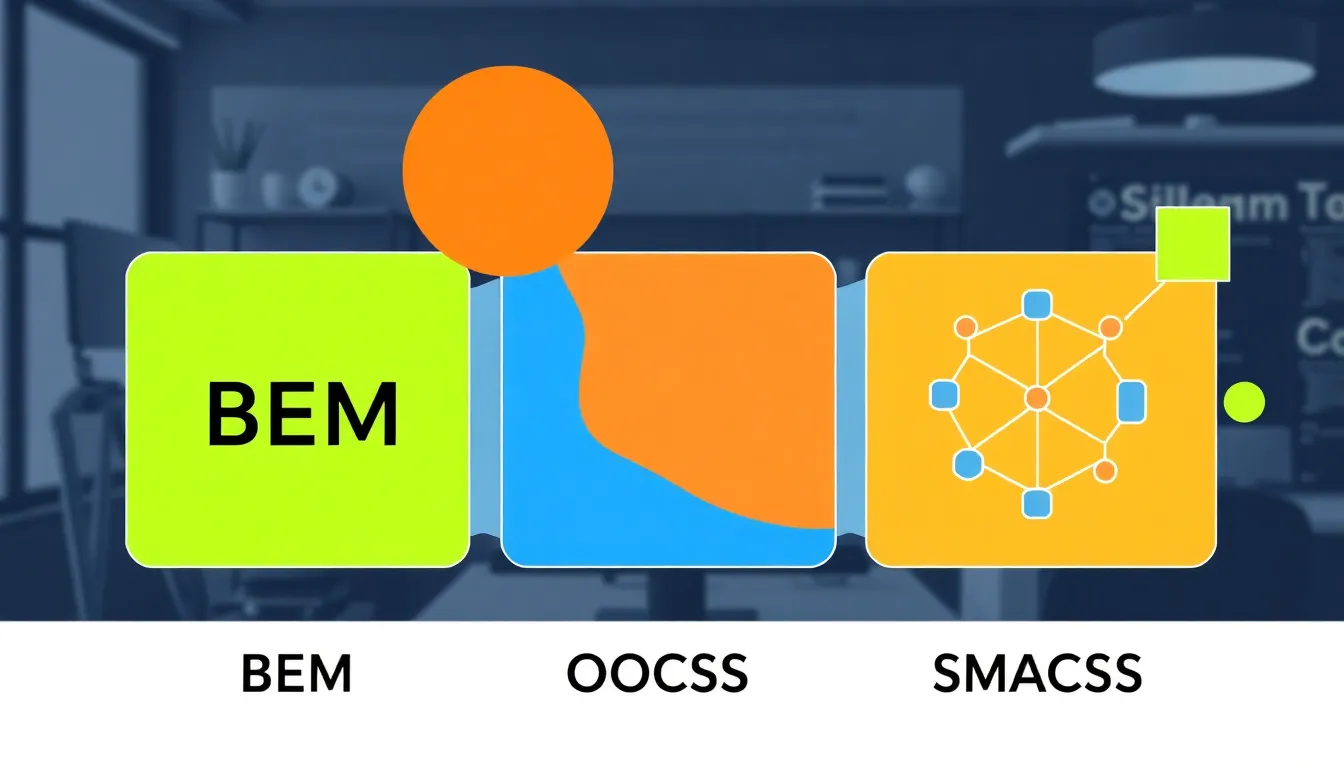Table of Contents
ToggleIn the ever-evolving world of web design, CSS design patterns are the unsung heroes that can transform a bland website into a visual masterpiece. They’re like the secret sauce in your favorite recipe—without them, everything feels a bit… flat. Whether it’s creating a sleek grid layout or a dazzling card design, these patterns provide a solid foundation for developers looking to elevate their projects.
Imagine trying to build a sandcastle without a bucket. That’s what designing without CSS patterns feels like! By understanding and implementing these patterns, designers can save time and avoid the dreaded spaghetti code. So, buckle up and get ready to dive into the world of CSS design patterns—where creativity meets efficiency, and every pixel counts.
Overview of CSS Design Patterns
CSS design patterns serve as structured solutions for common layout and styling problems in web design. These patterns enhance consistency and maintainability across projects by providing reusable code snippets that simplify development. Many developers rely on popular patterns like the Flexbox and Grid to create responsive layouts efficiently.
Understanding these patterns empowers designers to save time. For instance, using a grid system allows teams to align elements effectively without excessive calculations. Moreover, it streamlines collaboration among team members; everyone follows the same design principles, which reduces confusion.
Exploring various design patterns reveals numerous options for enhancing a site’s visual appeal. Examples include card layouts for showcasing content and modular designs for creating distinct sections that integrate seamlessly. Access to a repository of CSS patterns fosters innovation, encouraging developers to experiment with new approaches while adhering to best practices.
One significant advantage of adopting CSS design patterns lies in their capacity to minimize the risk of “CSS bloat.” Structured patterns help developers write clean, concise code, which results in faster load times and improved performance. Designers can easily implement changes or updates as needed due to the modular nature of these solutions.
Implementing CSS design patterns instills confidence in developers while navigating complex design challenges. Given the evolving landscape of web design, embracing these patterns continues to be essential. By leveraging proven strategies, teams create visually compelling and user-friendly websites that stand out in a competitive market.
Common CSS Design Patterns

Numerous CSS design patterns exist to streamline web development, enhance maintainability, and encourage collaboration.
BEM (Block, Element, Modifier)
BEM stands for Block, Element, Modifier. This methodology encourages developers to break down components into modular pieces. A block represents a standalone entity, an element exists as a part of a block, and a modifier defines a variant of a block or element. For example, in a navigation bar, the block can be the navigation itself, elements include the links, and modifiers signify different states such as active or disabled. Using BEM fosters code clarity and scalable architecture, making it easier for teams to manage large codebases and maintain consistency across projects.
OOCSS (Object-Oriented CSS)
OOCSS, or Object-Oriented CSS, emphasizes the separation of structure and skin while promoting reusable code. By treating styles as objects, developers create a more flexible and manageable stylesheet. For instance, a button object can be styled independently from its context, allowing for consistent design across various interfaces. Encouraging reusability through OOCSS minimizes repetition, reduces CSS file sizes, and enhances performance. This approach also aids in adapting code to future design changes without significant overhauls.
SMACSS (Scalable and Modular Architecture for CSS)
SMACSS, which stands for Scalable and Modular Architecture for CSS, focuses on categorizing styles into five distinct types. These categories include base, layout, module, state, and theme. By organizing styles systematically, SMACSS enables developers to understand how each style interacts within the design. An example includes using layout styles to define the structure of a page while utilizing module styles to handle individual components. Through SMACSS, teams gain clarity and consistency in their styling, improving maintainability and scalability for complex projects.
Benefits of Using CSS Design Patterns
Utilizing CSS design patterns enhances consistency across web projects. Patterns streamline the development process, allowing teams to adhere to established guidelines. Flexibility emerges as developers can easily modify or expand these patterns based on project needs.
Time savings play a significant role when adopting these patterns. Developers minimize repetitive tasks and reduce the potential for errors, which leads to faster project completion. Improved maintainability comes from organized code, enabling teams to manage changes with confidence.
Performance benefits arise from structured CSS. Cleaner code results in quicker load times, ensuring a better user experience. Enhanced responsiveness is possible through patterns like Flexbox and Grid, which facilitate adaptive layouts that work seamlessly on various devices.
Collaboration improves significantly when design teams apply common methodologies. BEM, OOCSS, and SMACSS provide frameworks that enhance communication and understanding among team members. Developers share a common language, reducing confusion and speeding up the design and development process.
Visual appeal increases with well-implemented patterns. Card layouts and modular designs create engaging interfaces that capture user attention. Designers leverage these patterns to enhance aesthetics while maintaining functionality.
Ultimately, employing CSS design patterns positions developers to tackle complex challenges efficiently. By focusing on best practices, they create websites that not only stand out but also meet user expectations. Embracing these strategies leads to a more organized and effective approach to web design.
Implementing CSS Design Patterns
Implementing CSS design patterns requires knowledge of best practices and access to the right tools and resources. Following these guidelines leads to better performance and more maintainable code.
Best Practices
Adhering to best practices in CSS design ensures cleaner and more efficient code. Utilizing consistent naming conventions aids readability and simplifies collaboration. Employing modular design enables easier component reuse, leading to less duplication. Organizing styles into distinct files promotes better maintainability. Prioritizing responsive design facilitates a seamless user experience across devices. Avoiding unnecessary complexity prevents performance issues and improves load times. Regularly testing layouts across various browsers helps catch potential issues early. Engaging with version control allows teams to manage changes effectively.
Tools and Resources
Developers benefit significantly from utilizing various tools and resources for CSS design patterns. Frameworks like Bootstrap and Tailwind CSS provide ready-to-use components. CSS preprocessors such as SASS or LESS enhance functionality with variables and nesting. Online resources, including CSS Tricks and MDN Web Docs, offer practical guides and examples. Tools like Autoprefixer improve cross-browser compatibility by automatically adding vendor prefixes. Design systems like Material Design provide structured guidelines for consistent UI design. Version control systems, such as Git, ensure collaboration and code management. These resources enable developers to implement patterns effectively and efficiently.
CSS design patterns are essential for modern web development. They provide a structured approach to solving common design challenges while enhancing a website’s visual appeal. By leveraging methodologies like BEM, OOCSS, and SMACSS, developers can create maintainable and efficient code.
Implementing these patterns not only streamlines collaboration among teams but also improves performance and responsiveness. As the web evolves, staying updated with CSS design patterns and best practices ensures that designers can tackle complex projects with confidence. Embracing these strategies will lead to user-friendly interfaces that stand out in a competitive digital landscape.








